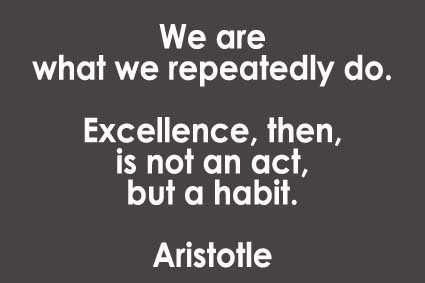What are your choices? If you are in a dilemma, apply the tetralemma technique with a twist to give you more options. Identify + 5 alternatives!
Five leadership tips for home, work, play
Are you a leader? Do you want to become one? Do you want to be your own leader? In any case, I trust you will find that my “Five leadership tips for home, work, play” help you become the leader you want to – and deserve to – be.
I have rediscovered these principles as I joined a volley-ball team, and in some recent domestic situations. Far away from the corporate world and very much relevant, nevertheless.
Check the five tips below and see how true they are for you.

1. Clarify: When you are a valuable member of the team and especially when you are a leader, you must produce clear communication, setting the context, the rules, the boundaries, the tasks, etc.
- In volley-ball, this means loudly claiming ownership of the ball being delivered to your court. This will prevent that two people go for it and don’t get it or that no-one goes for it. You lose the point.
- My husband is very good at clarifying rules with our five nieces and nephew when they step into his car. Rule #1 : no eating in the car, Rule #2: no kicking the front seats, Rule #3: no shouting. He has given the rules once. Now he asks the kids “so what are the rules for the car?” and they are able to list them all. It makes it easy for them to obey the rules and he can relax.
- My god-daughter could have used a clarification of the rules as a girl scouts patrol leader when they went to sell cookies in the neighborhood. Because she assumed everyone knew that they would walk on opposite sidewalks in the same direction approximately at the same speed and wait for each other at the end of the street, she lost one of the girls who assumed she could go say hi to her Mom who lived not far from there. Although the girl was safe and sound, the Mom lost trust in my 12-year-old niece’s ability to lead. The Mom made the girl quit the group. Personally, I believe the Mom overreacted – the girl is 10 years old after all, not a baby, (and she wanted to stay).
2. Confirm: Make sure communication is well received and understood, both from your end as from the other end.
- In the same girl scout incident, the girl shouted something from the other side of the street. My god-daughter misunderstood what was said and she replied “yes”. The girl was asking if she could go see her Mum. The girl could have made sure her question was actually heard and my niece could have been more attentive to what was being asked.
- In episodes of Kitchen Nightmares or Hell’s Kitchen, you often hear Gordon Ramsay shout: “communicate!”, usually with some very strong expletives. A kitchen that doesn’t communicate is a kitchen that fails. Gordon wants the executive chef to clearly communicate orders and timing. But he also wants the sous-chefs to respond loudly and to acknowledge that they have received the instructions. A noisy kitchen where loud “Yes chef”’s can be heard are the signs of a healthy kitchen.

3. Go for it: If you want to be a leader, then go take it with your hands, your feet, your head, everything you’ve got. There is no use tiptoeing or not committing fully to the role. Take time to engage, but once you are engaged, go full throttle. For Trekkies, go warp speed rather than pulse.
- In volley-ball, if I go for a ball, I must go for the ball. I shouldn’t start off, then hesitate or wait or even go back. I can only stop if someone has clearly claimed ownership of the ball and I have acknowledged.
- This has happened to me so many times I am actually starting to consider myself an expert at it. I find myself in situations where I have taken informal leadership and I am quite happy with it. Then at some point, I need to fully commit to leading this group or this project and that’s where I get cold feet. So I am eventually either forced by circumstances to go ahead or I find a way to relinquish my role. Luckily for me, it has never been of great negative consequences, except that it has frustrated me to no end. So I am pledging to practice with small things like when I am playing volley-ball and as I do so, I will learn to trust myself to lead in bigger challenges.
4. Validate: Make sure to insert regular checkpoint moments, whether planned or unplanned, and to encourage your team on making good progress and on their good behavior. Do avoid micro-managing this process though.
- In my volley-ball group, leaders encourage all players to play even better. They do not chastise or criticize, rather they observe what you do and they give you constructive advice. They high-five you, they give verbal encouragement, they keep you upbeat. If team members maintain a focused and positive state of mind, then everyone plays better and the odds for winning improve.
- My god-daughter could have made sure to visually check where the other team was at. If she had, or if she had delegated the role to one or several people, they would have discovered the “disappearance” much quicker.
- Getting lost seems to be a thing in this family. My nephew got lost in the woods once and the same day he got “forgotten” on the train. The boy scout leaders didn’t keep regular checks of everyone. Again, it would have been fairly easy to put the boys into pairs of buddies. Each buddy having to keep check on the other member of the pair. Additionally, they could have counted everyone at each important moment such as getting off the train. This would have greatly diminished the risk of losing someone.

5. Keep at it: Leadership is not something you acquire for ever. It is something to build on regularly. It is a skill you hone and practice that requires consistence and perseverance. Allow yourself to fail from time to time and to learn from your failure. However keep your eye on the ball and keep going at it.
- In volley-ball, you need to keep going for the ball for as long as the game is on, for as long as the competition is on. Similar to practice number 3, but on a larger scale, if you fail to commit fully to the whole process – reasserting your leadership time and time again – you will end up losing credibility, confidence in yourself, trust and eventually the competition. You also need to be a consistent leader whether you are in receiving or attacking positions. Whether you are the passer or the captain of the team.
- When my husband decides to change a habit, he just does it. He doesn’t allow himself exceptions. He doesn’t give himself any excuses. He just does it, repeatedly. I believe he doesn’t even think about it anymore. The decision has been made and he is implementing it. By the way, this is a very good strategy for getting things done: make the decision then pretend you are just the person executing a decision that has been made for you.
These are five simple tips to improve your leadership, and even more than that these are five principles for getting what you want out of life.
How to implement these tips?
- Find examples in your life where you have/haven’t been true to each of these principles. Identify counter-examples and contrast them. What has been the difference that made the difference? What metaphor, symbol, gesture will help you remember the good examples when you need them?
- Find examples in other people’s life, in everything you do, every place you go. Observe how they do. Imagine yourself doing the same thing. What would change for you if you did it that way?
- Congratulate yourself anytime you feel you have been successful in applying one of these tips. Add this example in your databank of good examples. So you create strong pathways to your resources.
- Identify one principle that you wish to get better at. Then find as many situations as possible in which you apply this principle. Start with small things then move on to bigger challenges as you grow in confidence.
I have learned something else too! I have learned that getting involved in various activities with diverse people and keeping an open mind has enabled me to re-discover and formulate these five leadership tips for home, work and play.

